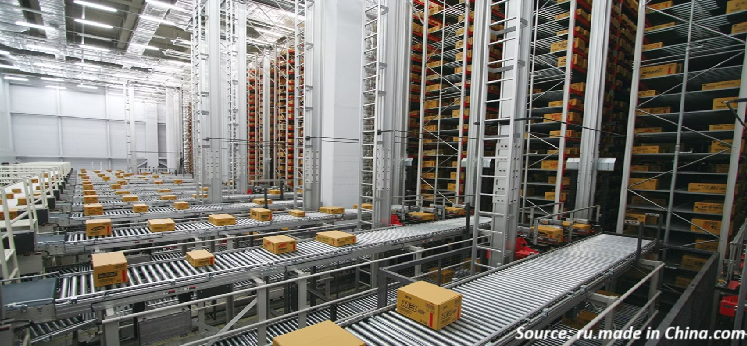
Australia Lawn Care Products Market by Product Type (Lawn Mowers, Cutters & Shredders, Tractors, Grass Seed Distributors, Fertilizer Distributors, Pesticide Distributors, Weed Killer Distributors, Dethatchers, Aerators, Tillers, Sprinklers, Edgers, Leaf Blowers, and Others), by Application (Residential, Commercial, Golf Courses, Playgrounds, and Others) and by Propulsion (Diesel, Gas, Electric, and Manual) - Opportunity Analysis and Industry Forecast, 2024-2030
Industry: Construction & Manufacturing | Publish Date: 12-Apr-2024 | No of Pages: 147 | No. of Tables: 112 | No. of Figures: 77 | Format: PDF | Report Code : N/A
US Tariff Impact on Australia Lawn Care Products Market
Trump Tariffs Are Reshaping Global Business
Market Overview
The Australia Lawn Care Products Market size was valued at USD 1.43 billion in 2023, and is predicted to reach USD 2.43 billion by 2030, with a CAGR of 7.5% from 2024 to 2030. In terms of volume, the market size was 9052 units in 2023, and is predicted to reach 17120 units by 2030, with a CAGR of 9.1% from 2024 to 2030.
Lawn care products are indispensable assets for preserving the vitality and allure of lawns. By employing an array of equipment, implements, and chemical solutions, homeowners can cultivate thriving, weed-free lawns that offer an idyllic outdoor haven for relaxation and enjoyment. These products are tailored to address specific concerns such as nutrient deficiencies, weed proliferation, insect infestations, and fungal outbreaks. Through the strategic application of lawn care products, individuals can uphold the health and aesthetic charm of their outdoor environments, fostering a welcoming atmosphere for leisure activities and social gatherings.
Increasing Awareness of Lawn Health Propels the Australia Market Growth
The escalating awareness of lawn health is a driving force behind the growth of the lawn care products market in the country. As more homeowners become cognizant of the importance of maintaining a healthy lawn, there is a corresponding increase in the demand for lawn care products. Consumers are actively seeking solutions such as fertilizers, weed control products, and soil enhancers to promote lush, vibrant lawns.
This heightened awareness not only fosters a culture of proactive lawn care but also presents manufacturers with opportunities to innovate and develop advanced products tailored to meet the specific needs of lawn health enthusiasts. Overall, the growing awareness of lawn health plays a crucial role in propelling the expansion of the lawn care products market.
Increasing Demand for Organic Products for Lawn Care Among Consumers Drives the Australia Market Growth
The burgeoning demand for organic lawn care products among consumers serves as a key catalyst propelling the expansion of the lawn care products market in the country. This surge finds its roots in the growing environmental awareness among consumers who are increasingly mindful of the potential harmful impacts of conventional lawn care products on ecosystems and human health. Organic lawn care solutions, crafted from natural and sustainable ingredients, strike a chord with environmentally conscious consumers in search of safer and more eco-friendly alternatives.
Moreover, concerns regarding health and safety are compelling consumers to shift towards chemical-free options, with organic products perceived as being safer for both humans and the environment. Additionally, the preference for organic lawn care products is driven by their promotion of sustainable agricultural practices, which foster biodiversity and ecosystem equilibrium.
These products not only nurture soil health but also cultivate robust, resilient lawns in the long run. Furthermore, government regulations and certification programs endorsing organic farming practices play a crucial role in bolstering consumer trust and driving demand for certified organic lawn care brands.
With manufacturers continuously innovating and expanding their organic product lines, the market for organic lawn care products is positioned for sustained growth, meeting the evolving preferences of environmentally conscious consumers who prioritize sustainability and natural living.
The High Price of Lawn Care Products Acts as a Restrain of the Australia Market Growth
The elevated cost of lawn care products poses a notable obstacle to market growth in the country. With consumers prioritizing value and affordability, the high prices of these products can deter potential buyers and restrict market penetration. Price-sensitive consumers may opt for cheaper alternatives or reduce their usage of lawn care products altogether, leading to decreased demand and limited market expansion.
Additionally, high prices may hinder adoption among budget-conscious homeowners, particularly in times of economic uncertainty. To mitigate this restraint, manufacturers may need to explore pricing strategies that balance profitability with accessibility to appeal to a broader consumer base and stimulate market growth.
The Rising Adoption of Smart Lawn Care Technology Creates Ample Growth Opportunities for the Australia Market
The increasing adoption of smart lawn care technology in the country creates ample growth opportunities in the market. With homeowners embracing automation and connectivity in their outdoor maintenance routines, the demand for smart devices such as robotic mowers, smart sprinkler systems, and weather-based controllers is on the rise.
These technologies offer benefits such as water conservation, energy efficiency, and enhanced convenience, aligning with the preferences of modern consumers. Furthermore, advancements in AI and IoT enable intelligent monitoring and optimization of lawn care practices, further driving adoption.
Manufacturers can leverage this trend by developing innovative smart lawn care solutions that address specific pain points and deliver tangible benefits to consumers, thereby unlocking new avenues for market growth and expansion.
Competitive Landscape
Various market players operating in the Australia lawn care products market include Makita Corporation, Stanley Black and Decker, Inc., Toro Company, Kubota Corporation, Emak Group, Husqvarna Group, Deere & Company, Briggs & Stratton Corporation, Honda, and Robert Bosch GmbH. These market players are adopting various strategies, such as product launches and partnerships, across various regions to maintain their dominance in the Australia lawn care products market.
Australia Lawn Care Products Market Key Segments
By Product Type
-
Lawn Mowers
-
Cutters & Shredders
-
Tractors
-
Grass Seed Distributors
-
Fertilizer Distributors
-
Pesticide Distributors
-
Weed Killer Distributors
-
Dethatchers
-
Aerators
-
Tillers
-
Sprinklers
-
Edgers
-
Leaf Blowers
-
Others
By Application
-
Residential
-
Commercial
-
Golf Courses
-
Playgrounds
-
Others
By Propulsion
-
Diesel
-
Gas
-
Electric
-
Manual
REPORT SCOPE AND SEGMENTATION:
|
Parameters |
Details |
|
Market Size in 2023 |
USD 1.43 Billion |
|
Revenue Forecast in 2030 |
USD 2.43 Billion |
|
Value Growth Rate |
CAGR of 7.5% from 2024 to 2030 |
|
Market Volume in 2023 |
9052 Units |
|
Unit Forecast in 2030 |
17120 Units |
|
Volume Growth Rate |
CAGR of 9.1% from 2024 to 2030 |
|
Analysis Period |
2023–2030 |
|
Base Year Considered |
2023 |
|
Forecast Period |
2024–2030 |
|
Market Size Estimation |
Billion (USD) |
|
Growth Factors |
|
|
Companies Profiled |
10 |
|
Market Share |
Available for 10 companies |
|
Customization Scope |
Free customization (equivalent up to 80 working hours of analysts) after purchase. Addition or alteration to country, regional, and segment scope. |
|
Pricing and Purchase Options |
Avail customized purchase options to meet your exact research needs. |
KEY PLAYERS
-
Makita Corporation
-
Stanley Black and Decker, Inc.
-
Toro Company
-
Kubota Corporation
-
Emak Group
-
Husqvarna Group
-
Deere & Company
-
Briggs & Stratton Corporation
-
Honda
-
Robert Bosch GmbH

















 Speak to Our Analyst
Speak to Our Analyst





















